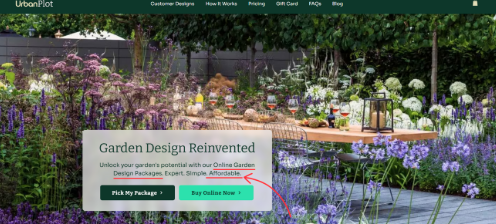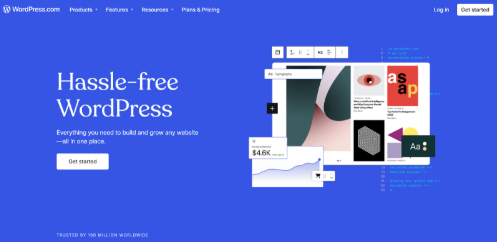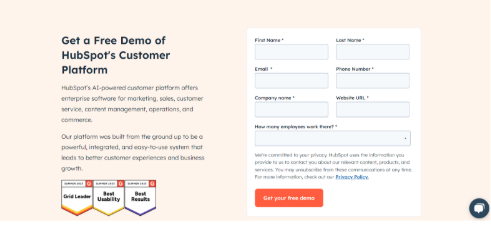PPC Landing Page Techniques That Drive More Conversions
In the world of paid advertising, securing a click is only half the job. The true measure of success lies in what follows. Once a user lands on your website via a paid search ad, the next few seconds are pivotal. Whether they continue or click away often comes down to the effectiveness of your PPC landing page.
These pages are crafted with a single purpose: to convert visitors into leads or customers. A poorly constructed page risks wasting budget, while a high-converting PPC landing page can lower your cost-per-click and improve your quality score, both of which are central to long-term campaign success.
Why Landing Pages Matter in PPC Campaigns
Unlike your homepage or general service pages, a pay-per-click landing page is designed around a specific offer, audience, and goal. Its role is to take a visitor from initial interest to action in as few steps as possible. It’s not a place for general exploration, it’s a conversion environment.
PPC landing pages should align closely with the intent behind the user’s search. That means echoing the promise of your ad copy, offering consistent messaging, and making it easy for the visitor to follow through. When done right, this leads to a better user experience, higher conversion rates, and lower bounce rates, all of which signal quality to the search engine and contribute to a stronger ad performance.
Align Message and Content with the Ad
Relevance is key. When someone clicks an ad for “affordable garden design packages,” they should land on a page that addresses that exact topic. The headline, imagery, and copy need to reflect what was promised in the ad; otherwise, visitors may feel misled and leave immediately.
This principle is known as message match. It reassures users they’re in the right place and helps improve your landing page’s quality score in Google Ads. A stronger quality score can reduce your cost-per-click and increase the visibility of your PPC ads.
Even small differences in wording can have an impact. Review each campaign and ensure that your landing page content echoes the keywords and phrases featured in your paid search.
Keep the Focus on a Single CTA
A common mistake in PPC campaigns is giving visitors too many options. While it’s tempting to include links to case studies, blog posts, or related services, doing so can distract users from your core objective.
Each landing page should be built around one primary call to action (CTA). Whether it’s to sign up for a free trial, request a callback, or complete a short form, that action should be obvious from the start. All page elements, the layout, visuals, and supporting text should work together to guide the user towards that goal.
Repeating the CTA in strategic positions on the page (for example, near the top and again after key content) can reinforce the next step without overwhelming the design.
Design for Clarity and Load Speed
Visitors arriving from PPC ads are often in research mode and will judge your page in seconds. Clean layouts, clear visual hierarchy, and fast load times are essential. If a page takes too long to load, particularly on mobile, users will simply exit.
To support conversions, keep design elements simple and avoid clutter. A strong headline, a benefit-led introduction, and clear paths to action are usually more effective than flashy animations or oversized graphics.
Importantly, ensure the layout adjusts smoothly across devices. A responsive design not only improves the user experience but also aligns with search engine expectations. Google, for instance, prioritises mobile-first indexing, so your page needs to work well on smartphones and tablets.
Use Imagery with Purpose
Visuals should support your message, not distract from it. Aim for imagery that complements your offer and reinforces the tone of your ad. For example, if you're promoting a product or service in the wellness space, lifestyle photos showing real people engaging with your brand can be more effective than abstract illustrations.
Hero images, positioned near the top of the page, are particularly valuable. They set the tone and help visitors understand what’s being offered at a glance. If you’re including video content, make sure it loads quickly and delivers value within the first few seconds.
Avoid stock images that feel generic or overused. The goal is to establish trust and credibility, and visual cues play a subtle but important role in that.
Build Confidence Through Trust Elements
In many cases, your landing page will be a user’s first real encounter with your brand. That means you need to establish credibility quickly. This is where social proof and trust indicators come into play.
Incorporate testimonials, user reviews, industry certifications, or press features. If you've worked with recognisable clients, showcasing their logos can be an effective form of validation. Even something as simple as a short review quote placed beside the form can provide reassurance.
Trust signals should be visible near key decision points, especially next to your CTA or just before a form submission. These details help reduce hesitation and support better engagement.
Make Your Forms Frictionless
Form design often determines whether a visitor becomes a lead. Too many fields can discourage submissions. Ask only for what you need at this stage — for many businesses, a name, email address, and one qualifier (e.g. company size or service interest) will be enough.
If your sales process requires more detailed information, consider using a multi-step form to make the process feel lighter. Breaking up questions into manageable chunks can increase the likelihood of completion.
Ensure that the form is mobile-friendly, error-tolerant, and provides clear confirmation when submitted. Good form UX contributes directly to lower bounce rates and higher conversion rates.
Use Language That Emphasises Value
Your headline is the first line most users will read. Instead of being clever, aim to be clear. Highlight the main benefit of your offer and ensure it’s easy to understand at a glance. Phrases that reference the outcome, such as “Grow Your Online Sales in 30 Days”, tend to be more effective than feature-led statements.
Support this with subheadings that explain how your product or service solves a problem. Your copy should guide users through a logical sequence: identifying a need, presenting a solution, and making it easy to act.
Avoid technical language or internal jargon. Instead, write in a conversational tone that reflects how your customers talk about their challenges.
Prioritise Mobile Experience
More than half of PPC traffic now comes from mobile devices. If your landing page isn't built for mobile-first interaction, you’re leaving results on the table.
Ensure buttons are large enough to tap comfortably, text is readable without zooming, and important content is visible without scrolling endlessly. Forms should be easy to complete on a phone, and CTAs should appear early in the experience.
A responsive design doesn’t just help usability, it also feeds back into your quality score and can positively influence your placement in Google Ads.
A/B Testing Drives Incremental Gains
Small tweaks can make a big difference, but only if you have the data to back them up. That’s where A/B testing becomes a vital tool. Test different variations of headlines, CTAs, imagery, and even button colours to see what resonates most with your audience. Run each test with a clear hypothesis, and give it enough time to generate meaningful results.
Over time, these incremental changes can lead to major improvements in conversion performance, helping your ad spend go further without necessarily increasing your traffic volume.
Adapt Pages Based on Audience Segments
Your audience is unlikely to be homogeneous. Some visitors may be ready to purchase immediately, while others are just beginning to explore their options. Tailoring landing pages based on keyword groups, intent level, or industry focus can lead to stronger results.
If you’re running multiple ad sets, consider creating separate landing pages for each, even if the core offer is similar. This allows you to customise the content and tone for specific groups, increasing relevance and engagement.
Personalised experiences build confidence and show that you understand your audience’s needs.
Don’t Overlook the Thank You Page
Once a user completes the main action, be it a form submission or sign-up, you still have an opportunity to engage. A well-crafted thank you page can continue the journey. Use it to offer related content, prompt the next step in your sales process, or simply confirm that the user’s time has been well spent. You might also consider including social sharing options or a calendar integration for follow-up appointments.
It’s a small detail, but it’s part of building trust and reinforcing a positive user experience.
Track Performance and Learn from the Data
Landing page optimisation doesn’t end at launch. Monitor your analytics closely to understand how users behave once they arrive. Look at metrics such as bounce rate, time on page, scroll depth, and CTA engagement.
Use UTM tracking to connect ad performance with landing page results, and review heatmaps or session recordings to identify any usability issues. The more you know about how people interact with your content, the easier it becomes to refine your strategy.
Regular analysis ensures that your PPC efforts continue to evolve and improve over time.
Final Thoughts: Make Every Click Count
Your landing page is more than a digital destination; it’s a turning point in your customer journey. It’s the space where curiosity becomes intent and where intent can become action. The better your page performs, the more cost-effective your advertising becomes.
By applying these landing page best practices, you can transform more of your PPC traffic into measurable outcomes. From crafting relevant copy to streamlining the mobile experience, every detail contributes to better results.
If you're investing in ppc campaigns and want to see increased conversions without inflating your ad spend, refining your landing pages is a natural next step. It’s not just about driving traffic, it’s about what happens when that traffic arrives.
Looking to enhance your PPC landing pages and increase return on investment? Reach out to explore how our expertise can help your campaigns perform at their best.




